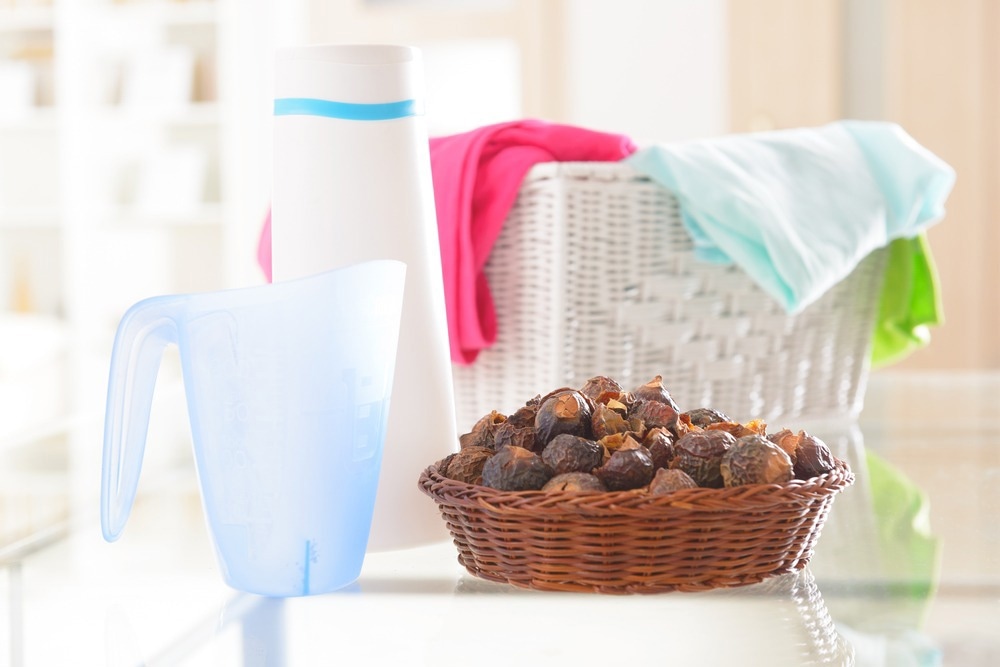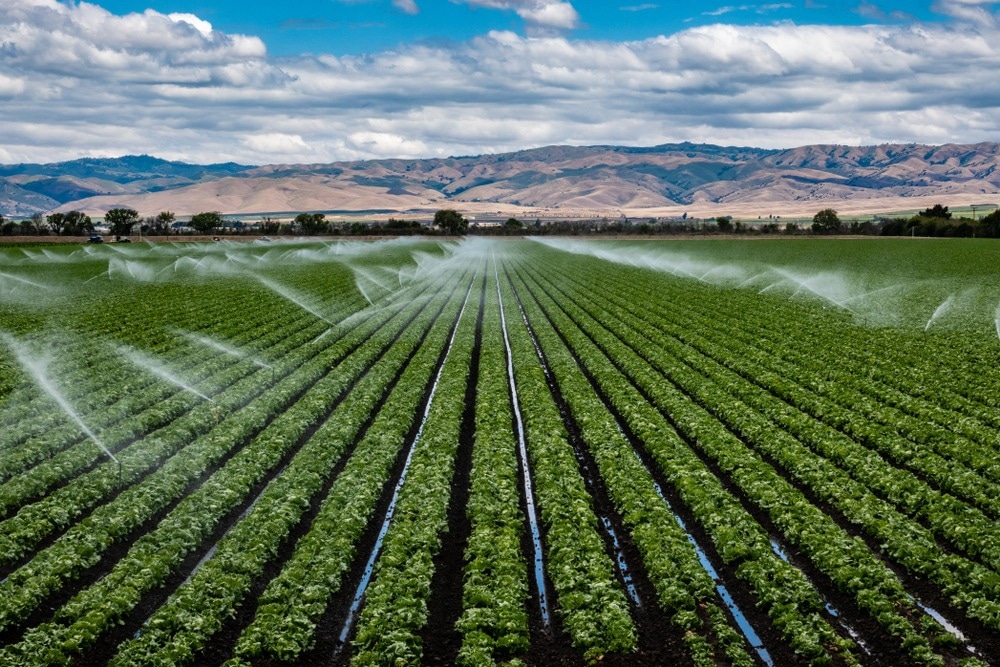Surfactants are matrices that possess the ability to encapsulate polar substrates and, in turn, reduce the interfacial tension of fluids. They lower surface tensions between liquids through their amphiphilic nature (much like the phospholipid bilayers of our cells), where their polar end interacts with the surrounding polar solution, forming micelles that can trap certain molecules.

Image Credit: Monika Wisniewska/Shutterstock.com
Biosurfactants, a subsection of surfactants, are derived from biological sources, such as fungi or bacteria. These differ from typical detergents or other industrially made surfactants, such as Alkyl sulfates or alkyl carboxylates. While biosurfactants can be costly to produce, they are both sustainable and eco-friendly, especially compared to their industrial counterparts.
Biosurfactants and Their Applications in Ocean Conservation
The Micelles generated by these biosurfactant monomers have been used to clean oil spills that result from faulty ocean rigs. The residual crude oil from these spills can harm the surrounding aquatic plant and animal life. Moreover, the surrounding ecosystem, including sea mammals and birds, can experience a drop in heart and respiration rates, diseased livers, and reproductive impairments.
By trapping oil in these micelles, we not only clear the oil more easily, but we also break the resulting emulsion, allowing companies to harvest the oil once more. Petroleum products and crude oil are generally difficult to extract from the ocean floor and the bedrock below. However, when implementing the use of biosurfactants, it facilitates the dissolving and extracting processes.
Different Variants of Biosurfactant
Biosurfactants are derived from both fungi and bacteria, and each surfactant's versatility and efficacy depend on the kingdom and the species of organism. Examples include Rhamnolipids produced by Pseudomonas aeruginosa or Pseudomonas sp, which refine the degradation of hydrocarbons and vegetable oils, lichenysin, produced by Bacillus Licheniformis which enhances oil recovery, and much more.
If we were to look inwards, we find that biosurfactants are also present within our own physiology. Within our lungs, speckling the surface of our bronchioles and alveoli, exists a pulmonary surfactant that contains proteins and lipids. Secreted via epithelial cells, these biosurfactants decrease fluid surface tension within the lungs, facilitating the inflating of the pulmonary tissue.
The pulmonary surfactant is so important that naturally derived surfactants from other organisms are being implemented into our own physiology to combat neonatal respiratory distress syndrome. Causing fast breathing, chest retractions, lower oxygen concentration in the blood, and even death, this ailment can be treated with prophylactic therapy via the administration of surfactants through an endotracheal tube (with recommended doses at 5 mg per kg).
The Mechanistic Process of Biosurfactants
Firstly, the interfacial tension between the aqueous and non-aqueous phases of the heterogeneous medium is decreased because of the microemulsions formed by the surfactant. Emulsions can be viewed as small oil droplets trapped within micelles. Though the micelle formation is the most stable form these aggregate particles can take, resulting in the lowest Gibbs free energy, the monomeric units can morph into other structures as well. Aside from the spherical micelles, there exist cylindrical micelles, bilayer lamella formation, and vesicle formation, and in the presence of a completely non-polar solution, reverse microemulsions are made.
Biosurfactants generally harbor a stronger resistance to environmental changes when compared to their industrial counterparts. Most are stable at extremely high pHs between 5.5 to 12, and they retain their biological function at high salinity ratios and high temperatures (25oC-120oC).

Image Credit: David A Litman/Shutterstock.com
Biosurfactants in Agriculture
Many institutions, like "Precision Laboratories" and "Drexel Chemical", have begun investing/producing many biosurfactants, making them a part of routine agricultural practices. They perform the crucial function of water manipulation and regulate the osmolarity of soil. It's a known fact that tens of billions of gallons of water are used a day for agricultural irrigation, and this number will only increase as the population grows and the area of cultivable land becomes scarcer. The irrigation chemistries produced by these institution markets predominantly come in the form of infiltration surfactants and hydration surfactants.
While infiltration surfactants have a truncated lipophilic anchor and a larger hydrophilic head, hydration surfactants possess a longer hydrophobic tail and a smaller hydrophilic head. The former uses its lipophilic anchor to attract soil together, causing water to flow freely and causing pesticides and nutrients to flow uniformly. Conversely, the latter is used to retain water within the soil, reduce plant stress and increase water availability over time. By manipulating these soil factors, crop yields can increase, and problems caused by drought and limited rainfall can be somewhat remedied.
However, it does take a skilled botanist or agronomist to know just how these biosurfactants should be implemented. Soil particle size, soil type, porosity, and density are factors one should consider when treating cultivable land. For example, finer soils like clay are more porous and have a greater capacity to hold water. If this water retention proves too great, then infiltration surfactants should be put into use. If the opposite is true and the soil is composed of larger particle sizes, like sand, water will not reside as readily within the soil. In this example, hydration solvents should be used to use less water, reduce plant stress, and prevent plants from drying out.
Sources:
- Nikolova C, Gutierrez T. Biosurfactants and Their Applications in the Oil and Gas Industry: Current State of Knowledge and Future Perspectives. Front Bioeng Biotechnol. 2021 Feb 15;9:626639. doi: 10.3389/fbioe.2021.626639. PMID: 33659240; PMCID: PMC7917263.
- Sağ Açıkel, Yeşim. (2011). Use of Biosurfactants in the Removal of Heavy Metal Ions from Soils. 10.1007/978-94-007-1914-9_8.
- Sarah González Henao, Thaura Ghneim-Herrera. (2021) Heavy Metals in Soils and the Remediation Potential of Bacteria Associated With the Plant Microbiome. Frontiers Media S.A https://doi.org/10.3389/fenvs.2021.604216
- Patton CD, Schulman ES. Surfactant: clinical applications. Am Fam Physician. 1992 Jul;46(1):233-6. PMID: 1621634.
- Wiebenga, Krista. "Precision Laboratories - Duplex Infiltration Surfactant." Precision Laboratories - Duplex Infiltration Surfactant, Precision Laboratories, 29 Dec. 2021, https://www.precisionlab.com/sports-turf/soil-surfactants/duplex.
Further Reading
Last Updated: Jan 25, 2023